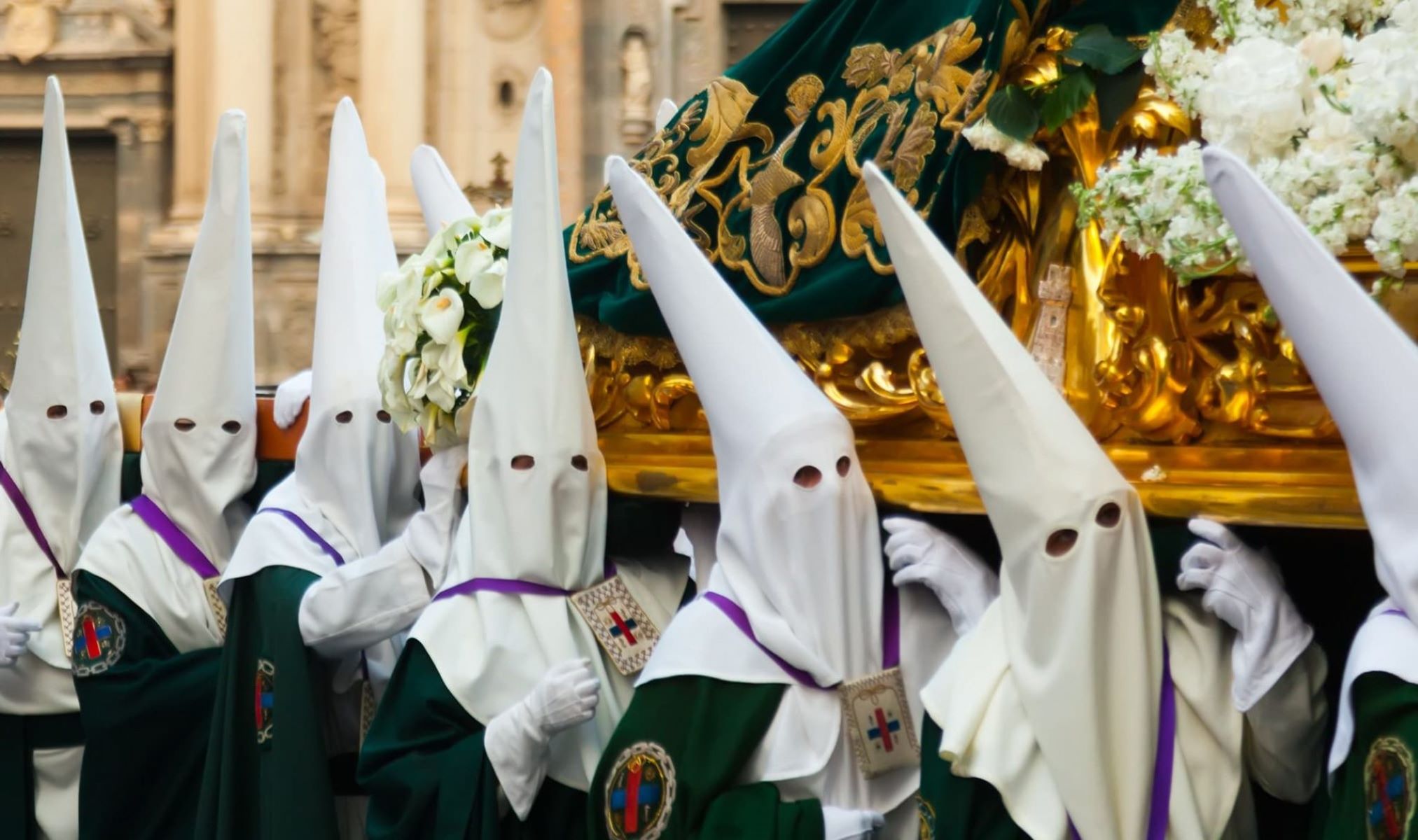Hidden Easter Traditions And Customs In Spain You Never Knew

Easter in Spain is a time of vibrant celebrations, deep-rooted traditions, and unique customs that might surprise you. From the dramatic processions of Seville to the lively festivities in small villages, Easter traditions in Spain offer a rich cultural experience. Have you ever wondered why people wear pointed hoods or carry massive floats through narrow streets? These practices date back centuries and hold significant meaning for locals. Whether it's the solemnity of Good Friday or the joy of Easter Sunday, each day brings its own special rituals. Ready to learn more about these fascinating customs? Let's dive into the heart of Spain's Easter celebrations.
Semana Santa in Seville
Spain's Easter traditions are rich and varied, with each region offering unique customs. Seville's Semana Santa stands out as one of the most spectacular. The city transforms into a stage for religious processions, drawing thousands of visitors.
La Madrugá: This event takes place on the night between Holy Thursday and Good Friday. It features some of the most revered processions, including the iconic "La Macarena" and "El Gran Poder."
Penitents and Costaleros: Penitents, known as "nazarenos," wear hooded robes and carry candles or crosses. Costaleros, on the other hand, bear the weight of the elaborate floats, or "pasos," on their shoulders.
Saetas: These are impromptu flamenco songs sung from balconies as the processions pass by. They add a deeply emotional and personal touch to the ceremonies.
The Passion Play in Olesa de Montserrat
Olesa de Montserrat, a small town near Barcelona, hosts one of the oldest and most famous Passion Plays in Spain. This theatrical performance depicts the last days of Jesus Christ and involves the entire community.
Historical Roots: The tradition dates back to the 16th century, making it one of the oldest in Europe. It has evolved over the years but retains its original spirit.
Community Involvement: Nearly 800 residents participate in the play, either as actors or behind the scenes. This collective effort strengthens community bonds.
Modern Adaptations: While staying true to its roots, the play incorporates modern elements like advanced lighting and sound effects to enhance the experience.
The Dance of Death in Verges
Verges, a small village in Catalonia, offers a unique and somewhat eerie Easter tradition known as "La Dansa de la Mort" or "The Dance of Death." This medieval dance symbolizes the inevitability of death.
Skeleton Dancers: Participants dress as skeletons and perform a macabre dance through the streets. The dance serves as a reminder of mortality and the fleeting nature of life.
Historical Significance: The tradition dates back to the Middle Ages and has been preserved almost unchanged. It offers a glimpse into medieval beliefs and customs.
Midnight Procession: The dance culminates in a midnight procession, where the skeletons lead the way, followed by townspeople carrying torches.
The Burning of Judas in Castile and León
In Castile and León, a unique Easter tradition involves the symbolic burning of Judas Iscariot, the apostle who betrayed Jesus. This act represents the community's rejection of betrayal and evil.
Effigy Burning: An effigy of Judas is created and paraded through the streets before being set on fire. The burning symbolizes purification and renewal.
Community Participation: Residents of all ages take part in the event, making it a lively and inclusive celebration.
Festive Atmosphere: The burning is often accompanied by fireworks, music, and dancing, turning it into a festive occasion.
The Tamborrada in Calanda
Calanda, a town in the province of Teruel, celebrates Easter with a deafening display of drumming known as "La Tamborrada." This tradition fills the air with the sound of thousands of drums.
Drumming Marathon: The drumming begins at noon on Good Friday and continues for 24 hours. Participants, known as "tamborileros," drum in unison, creating a powerful and mesmerizing rhythm.
Historical Origins: The tradition dates back to the 18th century and is believed to have been started by a local monk. It has since become a symbol of the town's identity.
Community Spirit: The event brings together people of all ages, fostering a strong sense of community and shared heritage.
The Procession of Silence in Zamora
Zamora, a city in Castile and León, is known for its solemn and silent Easter processions. These processions are marked by their deep sense of reverence and introspection.
Silent March: Participants march in complete silence, creating a powerful and contemplative atmosphere. The silence is only broken by the sound of drums and the occasional hymn.
Historical Brotherhoods: The processions are organized by ancient brotherhoods, some of which date back to the Middle Ages. These brotherhoods play a crucial role in preserving the tradition.
Emotional Impact: The silence and solemnity of the processions leave a lasting impression on both participants and spectators, making it a deeply moving experience.
Spain's Unique Easter Traditions
Spain's Easter traditions offer a rich tapestry of cultural experiences. From the solemn processions of Semana Santa to the lively Castellers in Catalonia, each region brings its own flavor to the celebrations. The Pasos in Seville, with their intricate floats, and the Dansa de la Mort in Verges, featuring skeleton dancers, showcase the country's deep-rooted customs. Don't miss the Burning of Judas in various towns, a fiery spectacle symbolizing the triumph of good over evil. These traditions not only highlight Spain's religious fervor but also its community spirit and artistic expression. Experiencing Easter in Spain provides a unique glimpse into the nation's heart and soul. Whether you're a history buff, a culture enthusiast, or simply curious, Spain's Easter celebrations promise unforgettable memories. Plan your visit and immerse yourself in these captivating customs.

